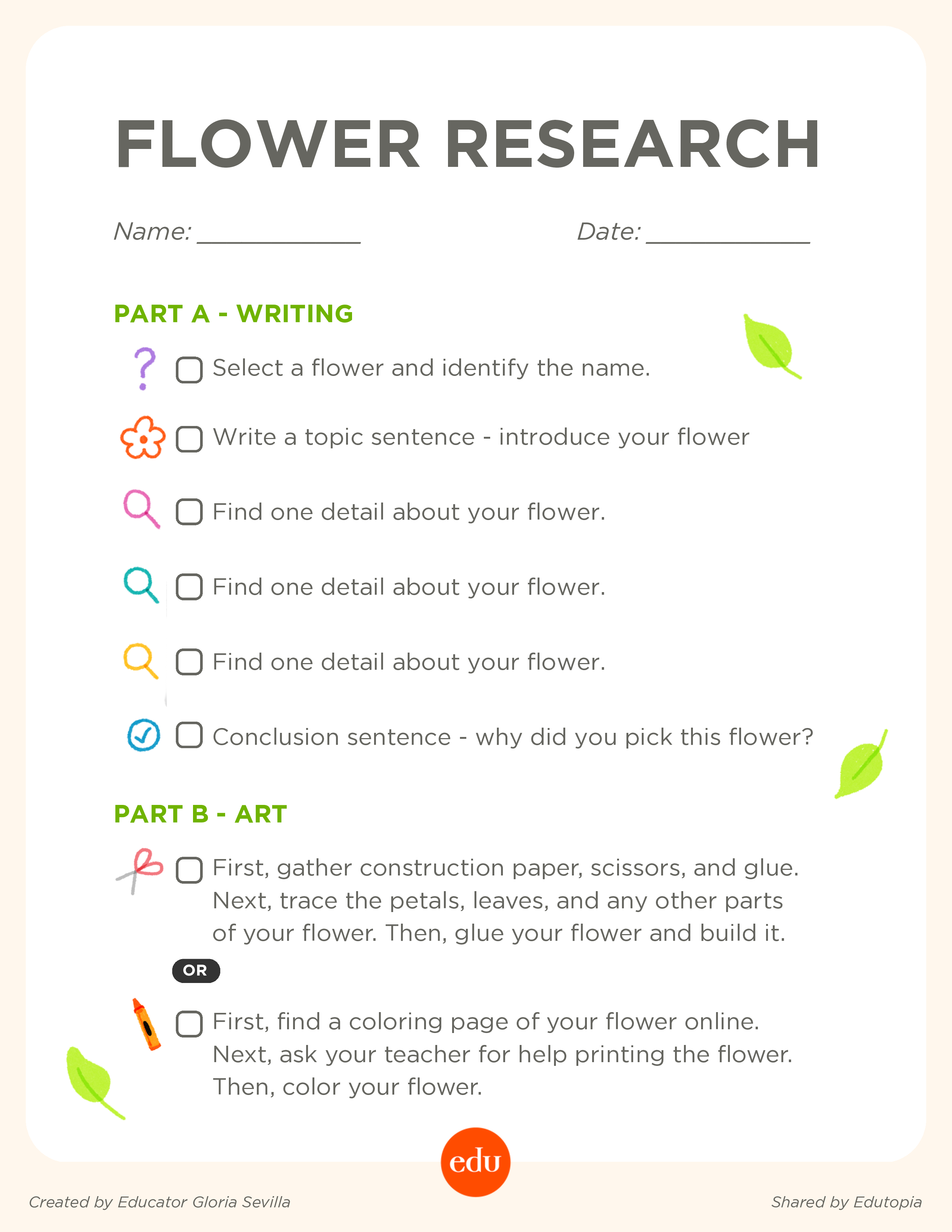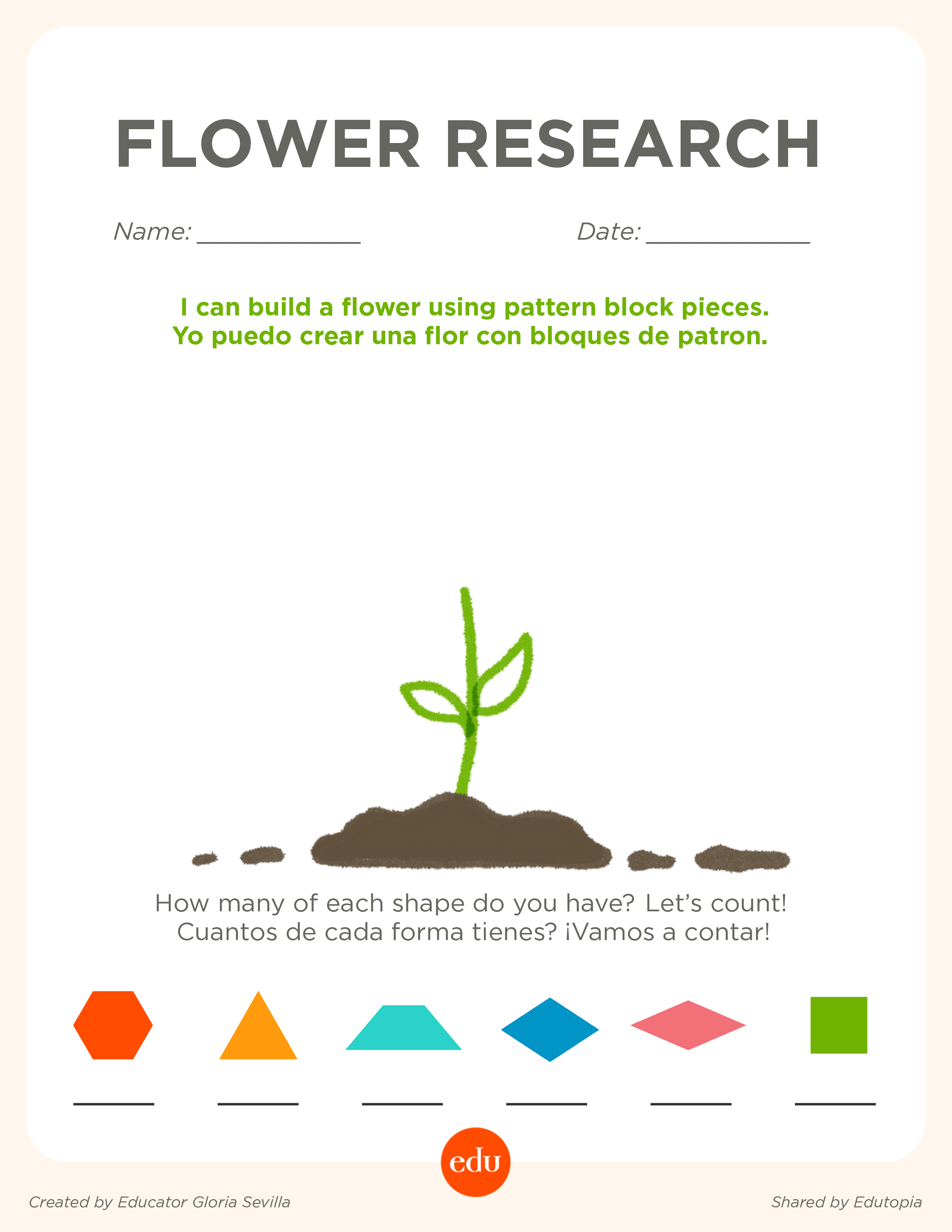Using a School Mural Project to Showcase Students’ Growth
Step-by-step instructions from an elementary school educator whose annual mural assignment is displayed at the spring open house.
Your content has been saved!
Go to My Saved Content.Over the last few years, I’ve tasked my fifth-grade and second-grade students with a creative project that they can put on display for parents and staff to enjoy at our spring open house. The project is a flower garden mural, where the flowers symbolize the changing of the seasons as well as students’ growth over the school year.
When I assign the flower garden, I talk to my students about how murals aren’t just creative outlets—they’re also an opportunity to tell the story of a community. In this case, it’s a community of learners. I connect mural-designing activities to grade-level state standards, while incorporating my students’ individualized education program goals and skills.
The project has been a big success. Students are enthusiastic about working on the mural and taking a break from their usual routines. Honoring their academic progress through artwork is a rewarding experience for everyone involved and provides a renewed sense of motivation as the school year wraps up.
Below is my step-by-step process for assigning and designing the mural, including lesson plans and downloadable graphic organizers for different elementary school grade levels.
GETTING STARTED
I begin by teaching my fifth- and second-grade students about murals. This ensures that students have enough contextual background before proceeding to the application part of the unit.
I gather pictures of murals in my school’s neighborhood and discuss the murals using the prompt “What do you see?” as well as sentence starters like “I see.../Yo veo…” Then, my class talks about the stories the murals are trying to tell, breaking down the murals’ various components.
From there, I select a mural artist and have students do a case study about the artist. Students watch a video or read an excerpt about this individual’s contributions and then verbally share key takeaways about them.
I also pick one or two murals that the artist created and project those murals on a screen for the class to observe. We discuss the murals using the teaching strategy “I know… I learned... I wonder…” As students share, I write keywords and draw corresponding pictures on the whiteboard.
To bridge our learning, I tell students that they, too, can be muralists. I let them know that we’ll be creating a flower garden mural that tells a story and connects the subjects of art, math, and writing. The mural’s story highlights students’ growth since the beginning of the year.
When it’s time to assign and design, I differentiate my instructions depending on the grade level.
INSTRUCTIONS FOR FIFTH GRADERS
Fifth graders’ mural contributions focus on five-sentence paragraph writing and oral expression, then art. I talk with students about names of flowers, their features, and example occasions when flowers are given to people. We also do an image search for various flowers that students may or may not know about. After that discussion, each student receives a checklist with the components needed to complete their paragraph writing assignment.
We read it together, and I ask them to identify step one, which is to select a flower and identify its name, then take a sticky note with the flower’s name on it. This explicit identification of the first task is especially useful for students with executive functioning needs. Some students choose a flower we’ve discussed during our lesson, while others go with a flower they encounter regularly outside of school.
After the selection process, I provide students with a graphic organizer, which further explains what their paragraph should include. The organizer has three steps:
- Topic sentence: Introduce your flower.
- Identify three details, written in three separate sentences, about the flower.
- Conclusion sentence: Why did you pick this flower?
After students have completed the first draft of their paragraph using the graphic organizer, I have them go back and edit their work. Once all edits have been completed, they must rewrite the final draft with paper and pencil, by typing, or by using speech-to-text.
The last step for fifth graders is to construct their mural artwork. I give them two options.
Option one: Gather construction paper, scissors, and glue. Trace the petals, the leaves, and any other parts of your flower. Then glue your flower together and build it.
Option two: Find a coloring page for your flower online. Ask your teacher for help printing the flower. Then color in your flower.

INSTRUCTIONS FOR SECOND GRADERS
The second graders’ assignment has an applied mathematical lens for designing a two-dimensional flower.
First, students select a printed template of a shape, like a hexagon, circle, or triangle. Next, students are given prewritten sentence frames where they are asked to describe their chosen shape by its attributes—the number of angles and amount of equal faces. When students complete their sentence frames, I check their understanding by asking them to explain why they wrote in those numbers. This ensures that students can verbally express how a specific amount of angles or sides leads to the classification of a shape.
After the writing portion has been completed, students move on to creating their art piece. They use the printed template of the shape they selected and are additionally provided with printed leaf and flower stem outlines. Students color all components of their flower as they choose, using colored pencils or markers. Lastly, students cut each piece (their shape, leaves, and stem) and glue their flowers together.
INSTRUCTIONS FOR KINDERGARTNERS
This year is the first time I’m having kindergartners contribute to the mural, but I wanted to pass along my lesson plan for them, too.
As with the second graders, the kindergartners’ task has a mathematical focus: constructing a flower with pattern block pieces. First, I model how to build a flower using a pre-created graphic organizer (included below). Then I prompt them with, “It’s your turn to build a flower with the pattern block pieces.”
After students are done, they count how many of each shape they used and write the corresponding numerical value on the graphic organizer. This connects important kindergarten-age concepts, like correspondence counting, shape identification, and representation of amounts via a numerical value.

DISPLAYING THE FLOWER GARDEN MURAL
When I explain the flower garden mural to each grade level, I reveal that after the assignment is totally finished, it’ll be displayed in our school’s main office, where it’s easily viewable. I aim to have each student complete at least one flower art piece. I want to showcase each student’s progress and emphasize a message of community, so I allow everyone to display their work.
Once all of my students have completed their assignments, I give older students the first choice of where they want to place their flowers on the mural. Then I ask my younger students for a placement preference.
After the mural is assembled and put on display, I walk with my students to show them the final product. We take some time to look at everyone’s contributions and locate their individual art pieces. That way, they know where to go and can show their loved ones and friends later.
Students’ creativity and individuality truly shine through a project like this. They get questions from staff and their peers about why they arranged a flower a certain way, and why they chose to research a specific flower. Their responses are innovative and offer us, as educators or family members, the opportunity to pause and appreciate our students’ perspectives.
